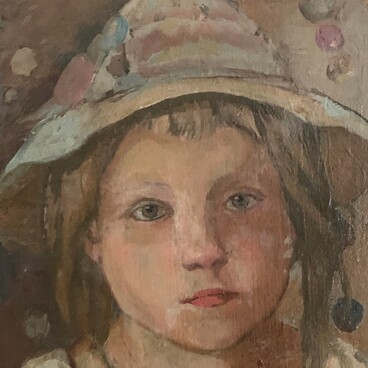It is common knowledge that Yefim Chestnyakov left for Saint Petersburg twice. In 1899, the 25 year-old artist first arrived in the capital in the hopes of enrolling in the Academy of Arts and studying paining and drawing under the guidance of Ilya Repin. Judging by the drafts of letters addressed to Ilya Repin, Yefim Chestnyakov viewed the artist as an unrivalled authority and wished to study under him. In autumn of 1905, due to political unrest in Saint Petersburg, the Academy of Arts closed down and the aspiring artist was forced to return to his home village of Shablovo.
When he left the capital, he took his art work with him — paintings, drawings, sculptures, sketches and literary works. The artist hoped in his heart that he would be able to fulfill his dreams, which were first and foremost centered on building a new and better life not only for his fellow villagers but also the entire peasant population. And art was meant to play a key role in this transformation. After Yefim Chestnyakov returned to the village of Shablovo from Saint Petersburg, he began receiving requests from private buyers. For example, the artist’s acquaintance, Alexander Nevzorov, offered him a very lucrative and decent project. Yefim Chestnyakov was asked to paint a waist high portrait of Zvonov, a famous merchant from Kologrivsky Uyezd, but he declined the offer. The artist, who was truly obsessed with realizing his dreams, did not have the time or willingness to do such work.
Yefim Chestnyakov viewed his role and purpose as an artist in society very differently, i.e. via art, he wanted to improve the hard life of peasants as well as to enlighten and educate his fellow countrymen. The letter Alexander Nevzorov wrote to Yefim Chestnyakov with the request that the latter paint the portrait of merchant Zvonov survived to this day. “Dear Mister Yefim Vasilyievich, I would like to inform you that during the Great Lent, you could surely expect to receive a commission to paint a waist high portrait of Zvonov. You will work on it at our almshouse. Respectfully yours, Superintendent of the Almshouse, Alexander Nevzorov 10 January 1906 Please visit me if you are in town” (the spelling and punctuation in the Russian version of the letter were preserved). It is worth noting that the portrait of Zvonov was, in fact, painted. In the end, Yefim Chestnyakov’s compatriot, Gennady Aleksandrovich Ladyzhensky, an academician and a nobleman from Kologrivsky region, agreed to take on the work. The waist high portrait was not finished because merchant Zvonov was unhappy about its quality.
When he left the capital, he took his art work with him — paintings, drawings, sculptures, sketches and literary works. The artist hoped in his heart that he would be able to fulfill his dreams, which were first and foremost centered on building a new and better life not only for his fellow villagers but also the entire peasant population. And art was meant to play a key role in this transformation. After Yefim Chestnyakov returned to the village of Shablovo from Saint Petersburg, he began receiving requests from private buyers. For example, the artist’s acquaintance, Alexander Nevzorov, offered him a very lucrative and decent project. Yefim Chestnyakov was asked to paint a waist high portrait of Zvonov, a famous merchant from Kologrivsky Uyezd, but he declined the offer. The artist, who was truly obsessed with realizing his dreams, did not have the time or willingness to do such work.
Yefim Chestnyakov viewed his role and purpose as an artist in society very differently, i.e. via art, he wanted to improve the hard life of peasants as well as to enlighten and educate his fellow countrymen. The letter Alexander Nevzorov wrote to Yefim Chestnyakov with the request that the latter paint the portrait of merchant Zvonov survived to this day. “Dear Mister Yefim Vasilyievich, I would like to inform you that during the Great Lent, you could surely expect to receive a commission to paint a waist high portrait of Zvonov. You will work on it at our almshouse. Respectfully yours, Superintendent of the Almshouse, Alexander Nevzorov 10 January 1906 Please visit me if you are in town” (the spelling and punctuation in the Russian version of the letter were preserved). It is worth noting that the portrait of Zvonov was, in fact, painted. In the end, Yefim Chestnyakov’s compatriot, Gennady Aleksandrovich Ladyzhensky, an academician and a nobleman from Kologrivsky region, agreed to take on the work. The waist high portrait was not finished because merchant Zvonov was unhappy about its quality.



